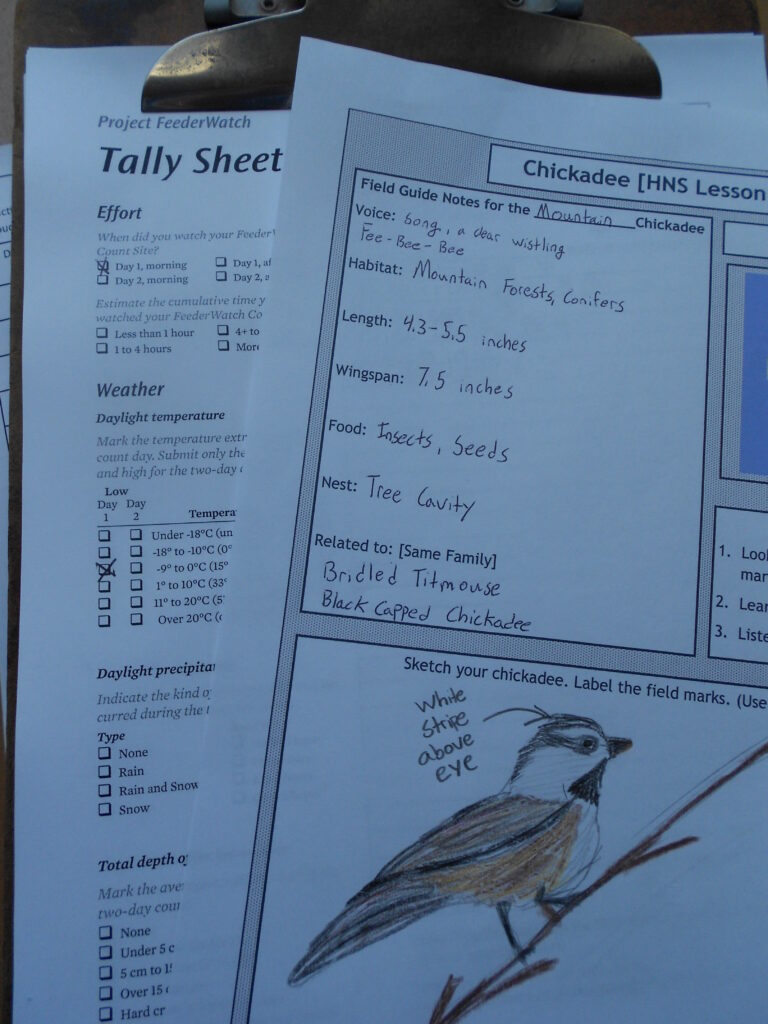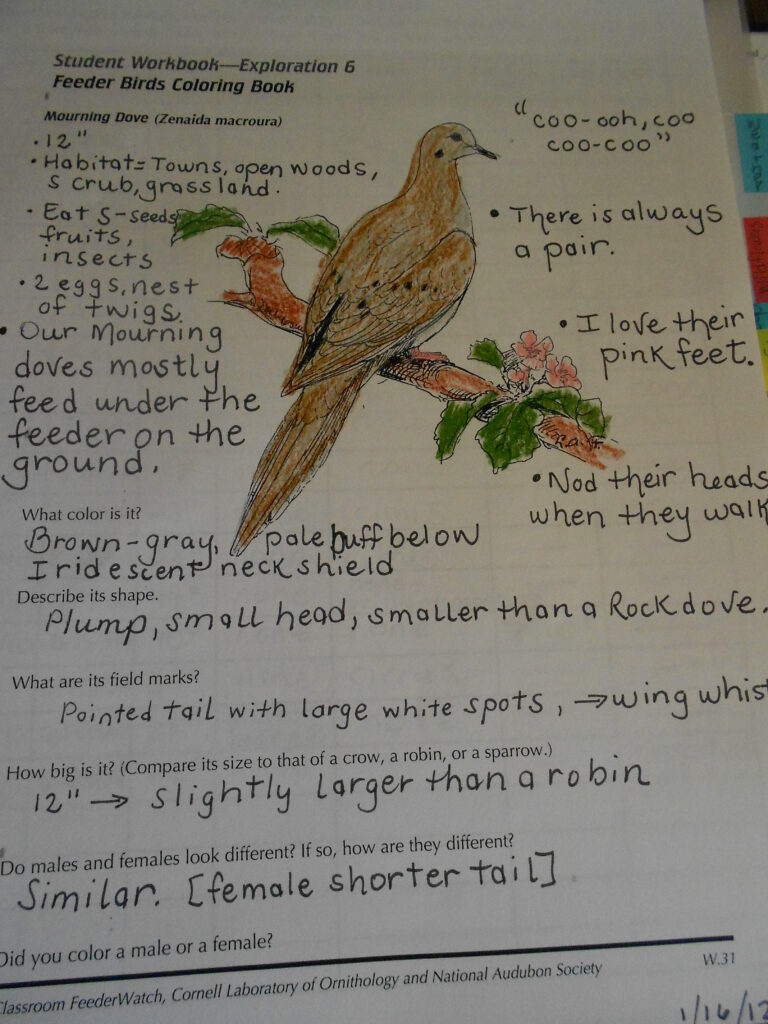
This is our fifth year of participating in the Great Backyard Bird Count in our Northern California home. It is the highlight of our February nature study and has led to our becoming better birders every year.
- Learning to identify our backyard birds-an obvious skill that comes directly from recording our observations.
- Refining our skills as observers-knowing the difference between male and female specimens, subtle differences between species like the House finch and the Pine siskin.
- Careful record keeping-counting and tallying each bird for the best data to share with the GBBC
- Better at understanding changes over time-comparing numbers of birds from year to year, anticipating migratory birds, knowing a new bird
- Learning to use our binoculars better and to take better bird photos
- Becoming part of an online birding community-reading other family’s experiences and lists, seeing their photos
- Value of contributing to a citizen science project- realizing our small part in this really important big project as a partner with Cornell Lab of Ornithology
- Western Scrub Jay 2
- Oak Titmouse 2
- White-breasted Nuthatch 1
- Spotted Towhee1
- White-crowned Sparrow 4
- Dark Eyed Junco 6
- House Finch 15
- House Sparrow 4
- California Towhee 1
- American Robin 20
- Anna’s Hummingbird 2
- Mourning Dove 4
- Lesser Goldfinches 2
- Northern mockingbird 1
- Steller’s Jay 1
- Pine Siskin 4
Not the impressive numbers we usually have and a few of our old favorites are missing like the woodpeckers and flickers and Cedar waxwings. We did have two new birds this year which was a thrill. The Steller’s jay and the Pine siskin are newcomers to our GBBC list.
I of course spent lots of time running from window to window to try to capture some of our backyard bird visitors….this is normal behavior from me at all times but especially during the GBBC. But this time I didn’t get an really super images so I will indulge you with my Mourning dove and California towhee….some of our regular year-round residents.
Did you count birds for the Great Backyard Bird Count?
Feel free to share your GBBC entries with the Outdoor Hour Challenge Blog Carnival this month or you can leave a comment here in this entry with the most exciting or interesting bird you saw during the GBBC.
Don’t forget that everyone who enters the OHC Carnival this month is entered to win a DVD from Crowe’s Nest Media – either the Monarch Butterfly or the Backyard Bird DVD! They are both wonderful resources for your nature study that your children will want to watch over and over again.
Our February Blog Sponsor….Thanks to the Crowe Family for providing such wonderful DVD’s and study guides for our science and nature study!

































